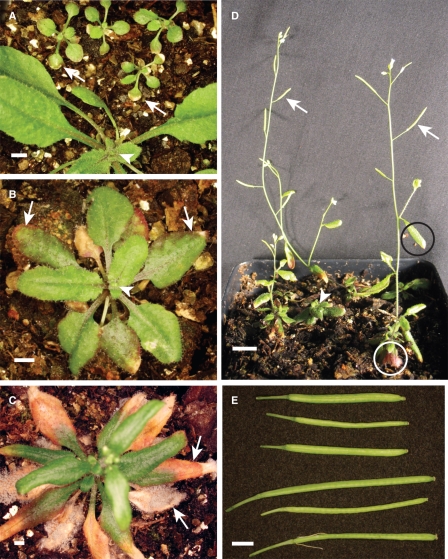Fig. 4.
Rosette, inflorescence and siliques from Atsuc2-4 plants. (A) Rosettes of four Atsuc2-4 plants, relative to a single plant segregating either AtSUC2/AtSUC2 or AtSUC2/Atsuc2-4, 30 d after germination. (B) Rosette and nascent inflorescence of a typical Atsuc2-4 plant 60 d after germination. (C) Rosette and inflorescence of a 90-d-old Atsuc2-4 plant. In (A), (B) and (C), white arrows point to mature leaves (cotyledons in A) of Atsuc2-4 plants showing anthocyanin accumulation and necrosis at the distal tips and, in (C), prominent fungal infection. White arrowheads point to floral buds in the centre of the rosettes. Scale bar = 2 mm. (D) Several Atsuc2-4 plants in a single pot, 90 d after germination. Three plants have inflorescences with maturing siliques (white arrows) and one plant has a rosette without an inflorescence (white arrowhead); rosette leaves have visibly evident anthocyanin (white circle) and cauline leaves have less (black circle). Scale bar = 10 mm. (E) Atsuc2-4 plants have shorter siliques (top three) than wild type (bottom three), and do not accumulate anthocyanin. Scale bars = 2 mm.

